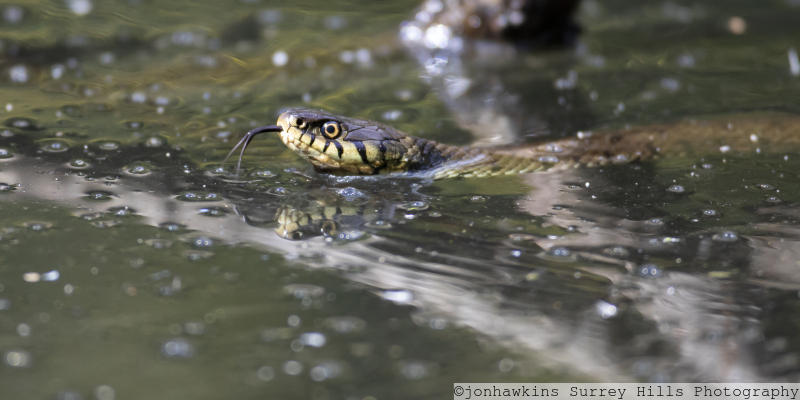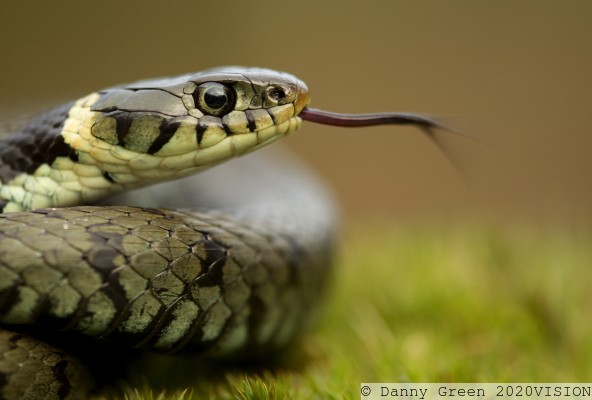Grass Snake
Natrix helvetica
<
>


 Type
Type Reptile
Reptile Status
Status Widespread
Widespread Protected
Protected Least Concern
Least Concern Season
Season Spring
Spring Summer
Summer Autumn
Autumn Keep an eye on the water as these reptiles love to swim. Otherwise in the morning on a sunny day watch out on the towpath as they'll need to bask to generate warmth. Grass Snakes often use the same basking spots so it's worth revisiting successful sites.
This green and yellow beauty is our longest snake - at often a metre or more - but don't fear as it's completely harmless.
The Grass Snake is very fond of wetland habitats, but also likes dry grasslands and gardens, especially those with a pond nearby - so the Montgomery Canal is the perfect environment for them.
During the summer, they might be seen swimming in its waters or basking in the sun on the towpath. Like all reptiles, Grass Snakes hibernate, usually from October to April. They hunt amphibians primarily and their favourite foods are frogs, toads and newts, but they will also take fish, small mammals and small birds. As they have no venom, they rely on the element of surprise, striking out and grabbing their prey and devouring them whole.
In turn, Grass Snakes have a lot of predators - including the invasive non-native American Mink, along with badgers, otters and Grey Herons - which they try to deter by hissing, playing dead and releasing a foul-smelling secretion.
Grass Snakes are shy creatures and will quickly take cover if they detect a human.
The only UK snake to lay shelled eggs, female Grass Snakes lay 10-40 in summer. They choose rotting vegetation such as compost heaps, and incubate them until they hatch in early autumn.
Typically grey-green in colour, with a distinctive yellow and black collar around the neck and black markings along the body, this snake shouldn't be confused with the Adder which has a distinctive dark zigzag pattern.


